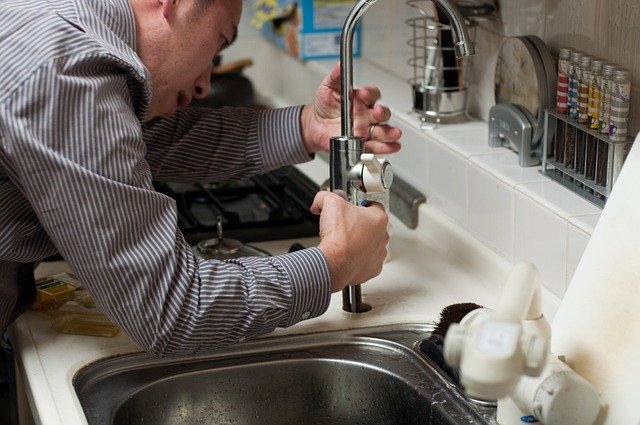Considering Plumbing as a Trade: What Basic Training May Involve
Plumbing remains one of the core technical trades, with training programs designed to introduce the basics of installation, repair, and safety procedures. For those exploring career options in practical fields, such programs may offer a structured path to gain entry-level knowledge. While requirements and outcomes vary, many courses focus on essential techniques, worksite awareness, and tool handling. This overview is for individuals assessing whether a plumbing career aligns with their goals — without promising specific jobs or qualifications.

What are the core skills taught in basic plumber training?
Basic plumber training programs focus on developing a set of core skills that are fundamental to the trade. These typically include pipe fitting, which involves learning how to measure, cut, and join different types of pipes accurately. Trainees also learn about water distribution systems, including how to install and maintain various fixtures such as sinks, toilets, and showers. Additionally, basic training often covers drainage systems, teaching students how to design and install waste and vent lines that comply with local building codes.
How do training programs address safety in plumbing work?
Safety is a paramount concern in plumbing, and training programs place significant emphasis on this aspect. Students learn about personal protective equipment (PPE) and its proper use, as well as safe handling of tools and materials. Training often includes instruction on identifying and mitigating potential hazards on job sites, such as working in confined spaces or dealing with hazardous substances. Programs also typically cover basic first aid and emergency procedures relevant to plumbing work.
What types of tools and equipment are introduced in basic training?
Basic plumber training introduces students to a wide array of tools and equipment essential for the trade. This includes hand tools like pipe wrenches, pliers, and cutters, as well as power tools such as drills and threading machines. Trainees learn how to select the appropriate tool for each task and how to use and maintain them safely. Many programs also familiarize students with diagnostic equipment like pipe cameras and leak detectors, which are increasingly important in modern plumbing work.
How do training programs prepare students for practical tasks?
Practical, hands-on experience is a crucial component of basic plumber training. Many programs incorporate workshop sessions where students can practice tasks like pipe fitting, fixture installation, and basic repairs under supervision. Some courses may also include simulated job site scenarios to help students apply their skills in realistic settings. Additionally, trainees often learn how to read and interpret blueprints and plumbing diagrams, which is essential for understanding the layout of plumbing systems in buildings.
What theoretical knowledge is covered in basic plumber training?
While practical skills are crucial, basic plumber training also provides important theoretical knowledge. This typically includes an introduction to plumbing codes and regulations, which vary by location but are essential for ensuring work meets legal standards. Students learn about the principles of water pressure and flow, which underpin much of plumbing system design. Basic physics and mathematics relevant to plumbing calculations are often covered, as well as an overview of different materials used in plumbing and their properties.
How long does basic plumber training typically take?
The duration of basic plumber training can vary depending on the program and location. In the United Kingdom, for example, many entry-level plumbing courses last between 6 to 12 months for full-time study. Some programs may be shorter, offering intensive training over a few weeks or months, while others might be part-time and extend over a longer period. It’s important to note that completing basic training is often just the first step in becoming a fully qualified plumber, with many individuals going on to apprenticeships or further education to gain more advanced skills and certifications.
When considering plumber training programs, it’s essential to understand the potential costs involved. While prices can vary significantly based on the provider, location, and course duration, here’s a general overview of training costs in the UK:
| Training Provider | Course Type | Duration | Estimated Cost |
|---|---|---|---|
| City & Guilds | Level 2 Diploma | 1 year full-time | £1,500 - £3,000 |
| Local College | NVQ Level 2 | 1-2 years part-time | £1,000 - £2,500 |
| Private Training Centre | Intensive Course | 8-12 weeks | £3,000 - £5,000 |
| Apprenticeship | Level 2 & 3 Combined | 4 years | Paid employment* |
*Apprenticeships typically involve paid employment with training costs covered by the employer and government funding.
Prices, rates, or cost estimates mentioned in this article are based on the latest available information but may change over time. Independent research is advised before making financial decisions.
In conclusion, basic plumber training provides a comprehensive introduction to the skills, knowledge, and safety practices essential for entering the plumbing trade. From practical pipe fitting to understanding complex water systems, these programs lay the foundation for a rewarding career. While the journey to becoming a fully qualified plumber extends beyond basic training, these initial courses offer invaluable insights into the profession and help individuals determine if plumbing is the right career path for them.
The shared information of this article is up-to-date as of the publishing date. For more up-to-date information, please conduct your own research.






